10-4-19
Pain and Glory: The Fearless Intimacy of Pedro Almodóvar
By Diane Sippl
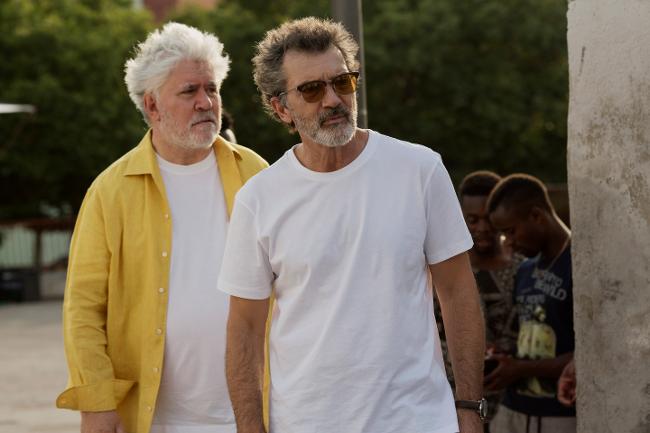
“I don’t want to lose one iota of the emotion you’ve put into these pages. It isn’t Shakespeare or Chekhov or Lorca—it’s you.”
Actor Alberto Crespo (Asier Etxeandia) in Pain and Glory
“Fiction and life are two sides of the same coin, and life always includes pain and desire.”
Pedro Almodóvar
“Every story’s been told before—” murmur spectators and critics alike. “But the truth is in the telling.” Indeed, Pedro Almodóvar has told the story—of desire, love, writing, creating—over and over in his oeuvre of 21 films, including the story of a director and actor that began with Antonio Banderas playing the lead (Law of Desire, 1987) and now, according to Almodóvar, concludes a trilogy in the same way, this time with Banderas apparently a stand-in for Almodóvar himself. In this most recent opus, Banderas’ look, his character’s profession, habitat, and style all conjure the writer-director of Pain and Glory, so why stop there in making connections? What about the personality, behavior, predicaments, affairs, and habits? The film, straight through to the final scene, invites associations between the on-screen artist and his off-screen life. But is this the point—the “truth” that’s in the telling? Hardly. Almodóvar, as always, is after bigger truths, such as the power of the arts, and few have pursued and mastered it over the last four decades as this auteur has.
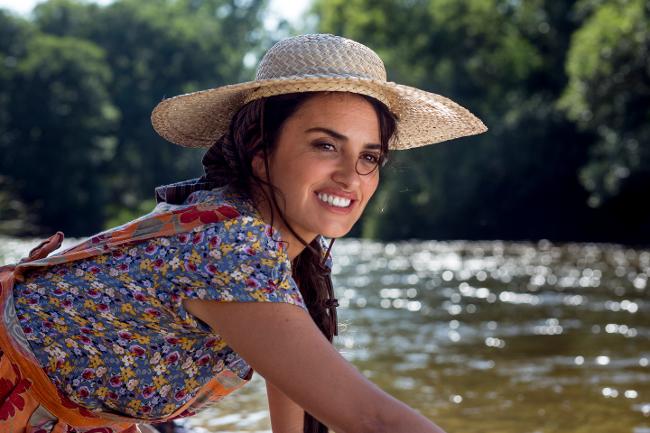
Pedro Almodóvar’s Pain and Glory packs a wallop—of vulnerability, sensitivity, and emotional intelligence. Such a paradox runs throughout the film. It doesn’t hurt that the central character is Salvador Mallo (literally, “savior mallet”), which feels like an oxymoron in the story for quite some time, given that we meet him as an incapacitated veteran filmmaker seeking relief from his pain, physical and otherwise. The English title misses the rhythmic roll and rhyme of the Spanish, Dolor y gloria, and its nuances of meaning as well, dolor bringing to mind sorrow and sadness, loss and distress, an upset—heartbreak—and gloria flying far from blessedness or victory but spanning connotations from elation and rapture to euphoria and ecstasy. Both dolor and gloria stem from passion, and how that passion drives creativity compels our fascination as spectators.
A central motif arrives already in the credit sequence as kaleidoscopic colors and forms, ever-changing, swirl into and out of each other in a mesmerizing montage. Their fluid transformations result in an arresting image that opens the narrative: Salvador (Antonio Banderas) sits motionless, entirely submerged in the water of a swimming pool, arms extended, eyes closed with mysterious white lines in the creases of the outer corners, and stitches in his flesh that follow the length of his spine. If he’s alive, he is suspended—body, mind, and heart—in the free flow of memory, daily life, and dormant imagination.
That water carries us to a riverbank where the child Salvador plays as his mother joins the other village women scrubbing laundry on washboards and spreading it out to dry in the sun on pennyroyal bushes as they sing “A tu vera” (led by the clicking fingers and voice of Rosalía, now so popular in Spain). The water, the light, the song, and Salvador’s mother (Penelope Cruz) are ravishing in this idyllic scene, the first of Salvador’s several recollections in the film. The lyricism that generally fills Almodóvar’s films along with melodrama recurs here (without the twisty plots and high drama of his other works), but in itself, that translucent beauty is not the “glory” we’re expecting. We leave the countryside to find Salvador today, old, feeble, and racked with maladies, the physical ones luminously portrayed in an animated sequence demonstrating the anatomy of relentless headaches, backaches, nerve and muscle malfunctions that keep Salvador isolated in his Madrid home. It’s like a museum of postmodern art that keeps him “company” as he downs a daily quotient of smashed pills, medically prescribed, that leave him longing.

When the cinematheque asks him to introduce a newly restored film of his, Sabor, he calls upon the actor to join him, though he detested his performance at the time for its heaviness and defiance of the film’s humor and lightness. Salvador tells his assistant, Mercedes (Nora Navas), that he saw it recently and it has changed. “It’s your eyes that have changed,” she tells him, perhaps for us a nod to his behavior when he knocks on the door of bleary-eyed hippy anachronism Alberto Crespo (a thoroughly convincing Asier Etxeandia) 30 years after their falling out to ask him to participate in the post-screening Q&A. The actor invites him into his backyard haven of evergreens and announces, “I’m going to chase the dragon. If the sight disgusts you, you can leave.”
What follows not only catches us off-guard but also transports us, via Salvador’s long buried reverie, to his childhood of poverty in Paterna where he slept in a train station, eating bread and chocolate, until he moved into his new home, a veritable cave with only a sunlit patio for light. There this pre-adolescent boy who devours books brings literacy to a young mason, Eduardo (César Vicente), who decorates the cave with exquisite hydraulic tiles; Salvador and Eduardo exchange verbal and visual expression, so to speak. That joint venture, the coalescing of aesthetics, is a thread that weaves together the story of Pain and Glory, not least because the “cave” in all its luminosity and the desire it contains, a house of magical illusions, works as a metaphor for cinema. But there are others.
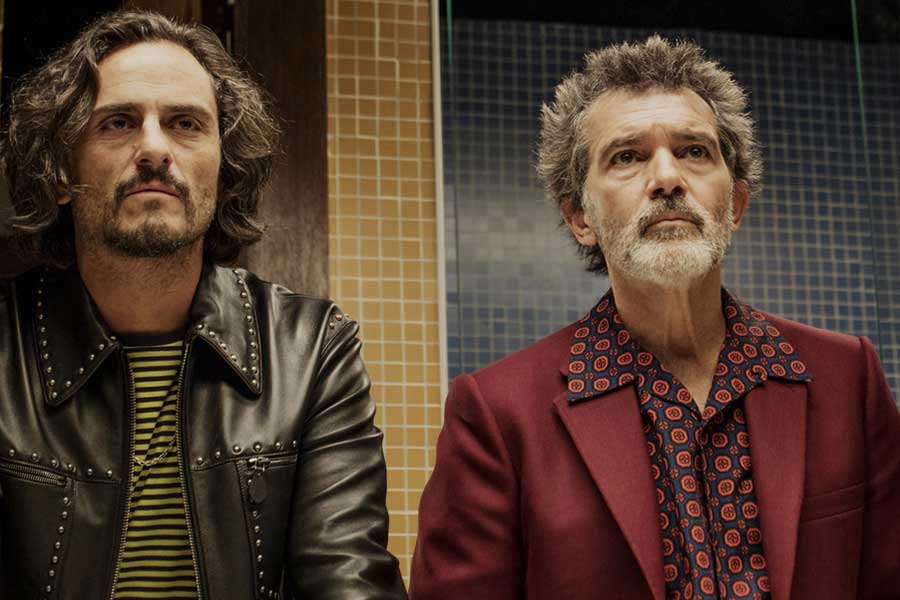
A poignant reversal of affairs finds Alberto standing before a bare white screen in an intimate theatre performing a monologue, a “confessional text,” as Salvador refers to it, that the filmmaker wrote so that he “could forget about the content.” When Alberto first begged for it as an acting opportunity, Salvador adamantly declined: “You’re on the opposite side of that text.” Nonetheless, this pivot in the film emerges as a surprising act of faith, especially given all that has ensued between the actor and the writer-director in-between multiple fluid flashbacks. It is the saddest, most beautiful manifestation of “glory” one would care to see. There, the sleazy, unreliable addict Alberto delivers the lines Salvador cannot get himself to own: “I thought the strength of my love could fight his addiction, but it wasn’t enough. Maybe love can move mountains, but it isn’t enough to save the one you love.” What Alberto has needed is the vehicle for and the acknowledgement of his talent. Salvador provides him with the former, but unbeknownst to himself, he also affords Alberto the latter. The messenger is someone else, Federico (Leonardo Sbaraglia), Salvador’s flame from the 1980s Madrileña movement indulgently celebrating liberation in post-Franco Spain. And here the white screen, as Almodóvar tells us, “represents everything: the cinema which Salvador saw in his childhood, his adult memory, the journeys with Federico to escape from Madrid and from heroin, how he was formed as a writer and as a filmmaker. The screen as witness, company and destiny.”
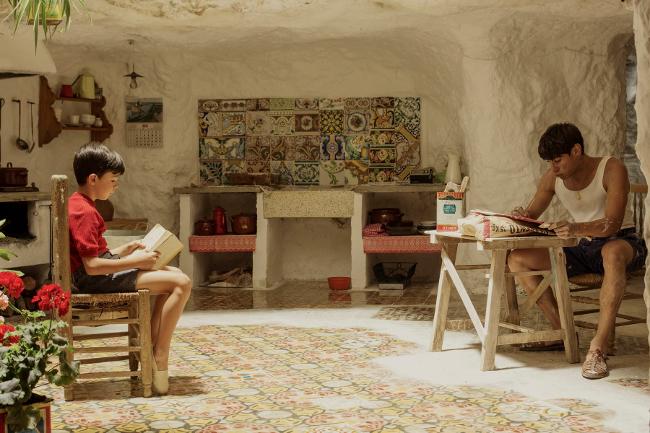
Salvador still needs to face his demons—his deteriorating body, his accelerating habit of self-medication, his despondent flight from work and creativity, his recently deceased mother (Julieta Serrano) who tells him what a bad son he was. “I disappointed her… simply for being who I am,” he mourns. But there are yet two twists of fate in store for him, one paving the way to the other. Suffice it to say that a line he once wrote is voiced back to him: “Love isn’t enough to save the one you love.” It’s the most perplexing line in the film, because in the end, desire—passion—love—are at work in cinema in the shared arts make it what it is. All that we’ve experienced in the film—writing, acting, painting, singing, dancing—do what they are meant to do as each character grows and changes. Pain and Glory ends with a boom, a clapboard, and a camera.
The film, written with ingenuity and grace by the director as always, wouldn’t be an “Almodóvar” without his signature attention to detail, and here the director surpasses himself. The acting is stupendous, all the way from Antonio Banderas’ acutely absorbing fragility (notwithstanding his wackiness in a key moment), Etxeandia’s guile in landing and nailing the role of his lifetime, and Sbaraglia’s cameo of tenderness incarnate, to the spellbinding performances of newcomers—little Flores, who sings with a voice of gold and carries off a manner to match it, alongside Vicente, who knocks him off his feet as if the boy were Saul struck by the light of God. Penelope Cruz is radiant as expected, looking so different in flashback from the doppelganger Jacinta, played by Julieta Serrano, as Salvador’s older (and also deceased) mother.
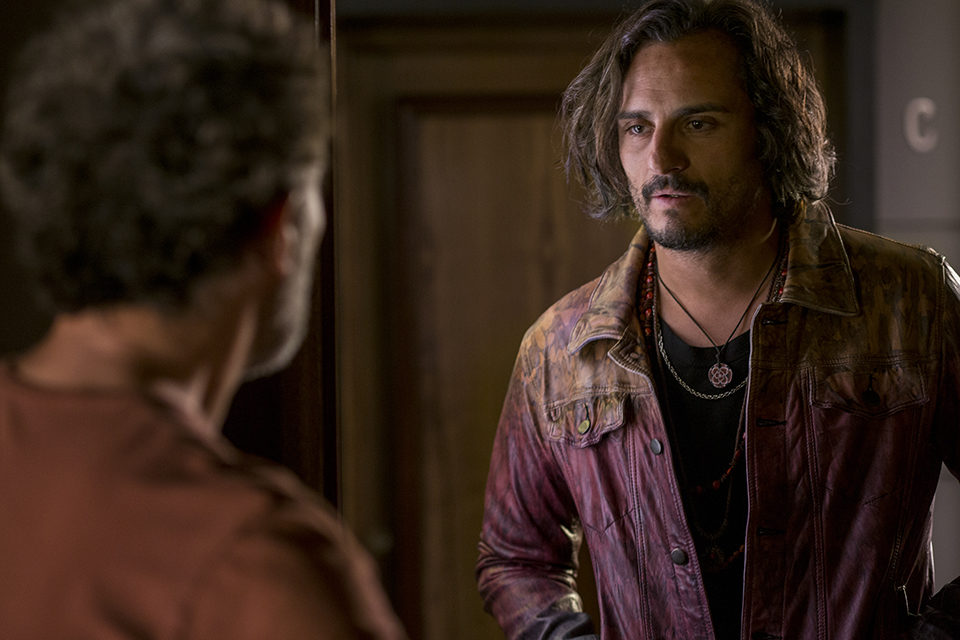
Juan Gatti’s animation sequences not only set the tone for the entire film, for its dreamy evolution of characters, but they also graph, with a scintillating economy of means, the medical information we need to understand Salvador’s “melancholy and misanthropy,” as Almodóvar puts it. Art director Clara Notari gives us the ambience of Salvador’s domestic “sanctuary” as an adult, surrounded by prints and paintings the Guggenheim wants (Almodóvar’s own collection of original art works that fill his home), along with posters of Hamlet in Alberto’s dressing room and Fellini’s 8½ in Mercedes’ office as allusions to relevant masterworks. The lighting for Salvador’s childhood days and nights in Paterna captures the patina of memory just as the reds and blues of his late-adulthood evoke the “difficult ring” that was Madrid in the 80s but also the unforgettable passion that prevails. José Luis Alcaine’s cinematography lets the actors’ faces—in their actions and reactions—shine.
Alberto Iglesias endows the film with a soulful intimacy through his score with strings, piano, and clarinet, the perfect complement to vibrant songs sung by Grace Jones (“La vie en rose”) and Chavela Vargas (“La noche de mi amor”) in Alberto’s monologue, and by Mina (“Come sinfonia”) during Eduardo’s watercolor sketch. The lingering effect of Almodóvar’s delectable orchestration of all of these arts convinces us, with his customary verve, how it is that “cinema that can save us.” Like an attar of love (call it the scent of jasmine and pee on a summer breeze), like a salve that not only assuages our wounds but arouses our desires, Dolor y gloria is a tonic for our times.
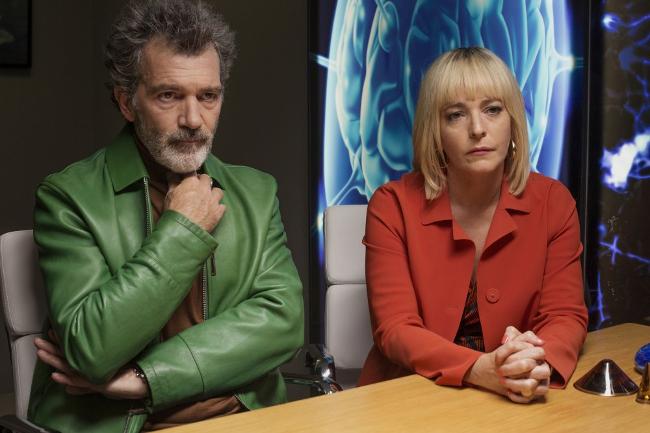
Pain and Glory
Director: Pedro Almodóvar; Producer: Augustín Almodóvar; Screenplay: Pedro Almodóvar; Cinematographer: José Luis Alcaine; Editor: Teresa Font; Sound: Sergio Burman; Original Score: Alberto Iglesias; Graphic Design: Juan Gatti; Production Design: Antxon Gómez; Art Director: Clara Notari.
Cast: Antonio Banderas, Asier Etxeandia, Leonardo Sbaraglia, Nora Navas, Julieta Serrano, César Vicente, Asier Flores, Penélope Cruz, Cecilia Roth, Susi Sánchez, Raúl Arévalo, Pedro Casablanc, Julián López, Rosalía.
Color, DCP, 113 min., Spanish with English subtitles.